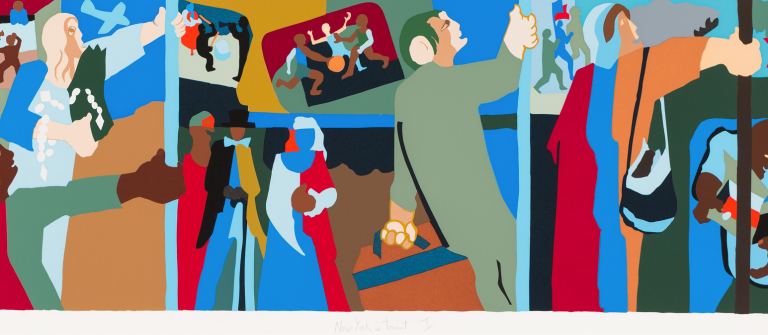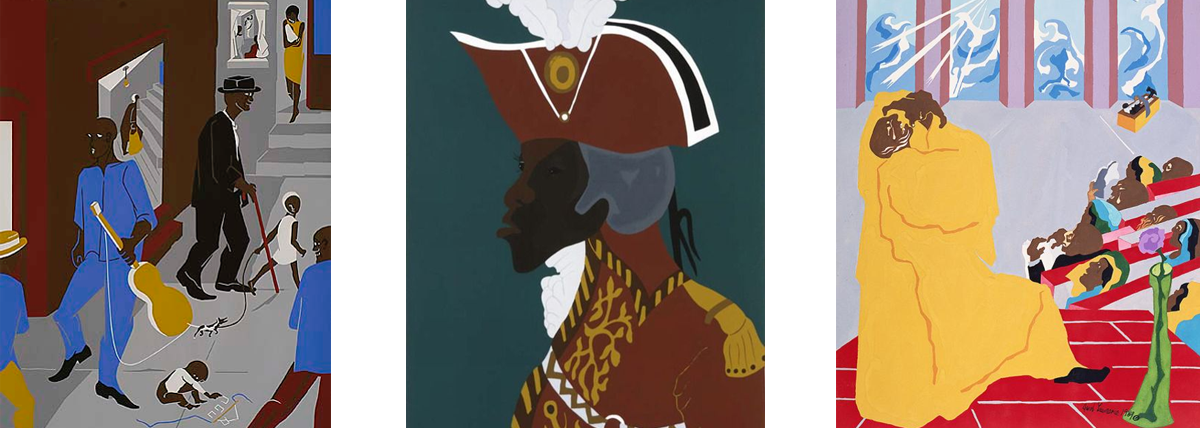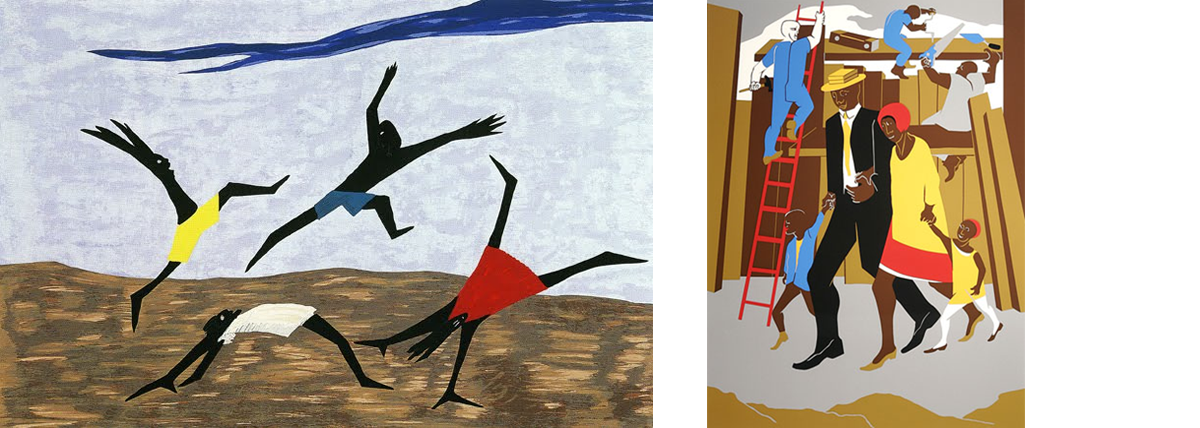

Jacob Lawrence, “New York in Transit I,” 1998, silkscreen, edition of 50 with 5 AP, © 2015 The Jacob and Gwendolyn Knight Lawrence Foundation, Seattle / Artists Rights Society (ARS), New York.
Featuring more than 90 works produced between 1963 and 2000, the exhibition focuses on his graphic work and explores three major themes of his printmaking oeuvre. Lawrence’s recording and recollection of African-American and larger African diasporic histories are featured, as well as his vivid observations of dynamic city life in Harlem, New York City. Works in the exhibition include significant complete print portfolios, such as the “Toussaint L’Ouverture” series, as well as “The Legend of John Brown” series, amongst others.
A prominent 20th-century artist, Lawrence is renowned for his depiction of African-American life as well as epic narratives of African-American history.
Presented in the Ruth C. Horton Gallery, Sherwood Payne Quillen ’71 Reception Gallery, and Miles C. Horton Jr. Gallery, “History, Labor, Life: The Prints of Jacob Lawrence” features more than 90 works produced by Lawrence from 1963 to 2000.
Lawrence started exploring printmaking as an already well-established artist. Printmaking suited his bold formal and narrative style exceptionally well. The connections between his painting and printmaking were intertwined, with the artist revisiting and remaking earlier paintings as prints. The inherent multiplicity of this medium provided an opportunity for him to reach broader audiences.
Lawrence was primarily concerned with portraying African-American experiences and histories. His acute observations of community life, work, struggle and emancipation during his lifetime were rendered alongside vividly imagined chronicles of the past. The past and present in his practice are intrinsically linked, providing insight into the social, economic, and political realities that continue to impact and shape contemporary society today.
Lawrence spent his formative years in New York City, where his work as an artist was shaped by the intellectual strength and vitality of the Harlem Renaissance, not only in terms of his engagement with such artists as Charles Alston and Augusta Savage, but by the ongoing discourse at the time about writing and giving identity to African-American history.
Lawrence spent months in the 135th Street branch of the New York Public Library, which is now the Schomberg Center for Research in Black Culture, studying historical documents, books, photographs, and journals before creating a series of narrative works that would bring him national recognition. He was only 25 when he became the first African-American artist represented in the collection of the Museum of Modern Art in New York with his “Migration Series” (1941), now considered to be a landmark in the history of American modern art.
During his career, Lawrence received the National Medal of Arts, which is the highest award given to artists and arts patrons by the United States government, as well as 18 honorary doctorates from institutions, including Harvard University, Yale University, New York University, and Howard University. He was a member of the American Academy of Arts and Letters and served as a commissioner for the National Council on the Arts.
Today, Lawrence’s work is represented in almost 200 museum collections, including the Art Institute of Chicago; the National Gallery of Art in Washington, D.C.; the Brooklyn Museum of Art; and the Metropolitan Museum of Art in New York.
“History, Labor, Life: The Prints of Jacob Lawrence” is organized by the Savannah College of Art and Design (SCAD) Museum of Art in collaboration with the Jacob and Gwendolyn Knight Lawrence Foundation and is curated by Storm Janse van Rensburg, SCAD head curator of exhibitions. The exhibition is on view through Oct. 13.

